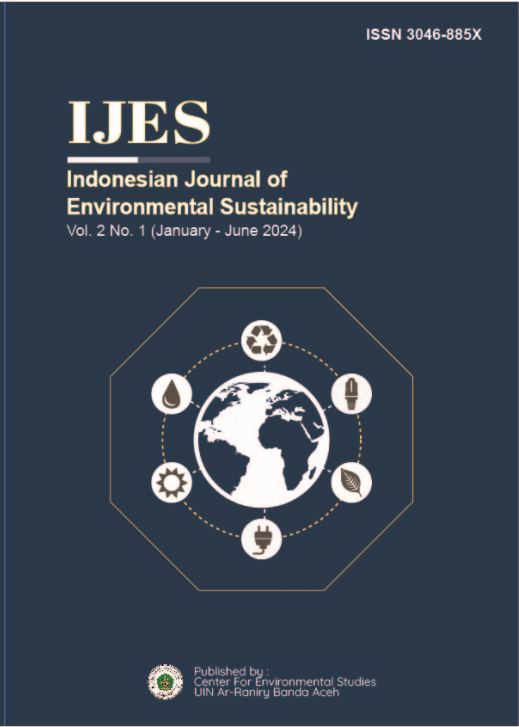REMOVAL OF MERCURY (Hg) FROM TAILINGS WASTE CONTAMINATED SOIL BY PHYTOREMEDIATION USING VETIVER (Vetiveria zizanioides L.)
DOI:
https://doi.org/10.22373/ijes.v2i1.5048Keywords:
Phytoremediation, Mercury (Hg), Fragrant RootAbstract
Mercury waste from unlicensed gold mining (PETI) is absorbed by the soil, so that the soil contains Mercury (Hg). This will cause environmental pollution. The Hg waste treatment method using the phytoremediation method has been able to bind Hg contained in the soil. However, phytoremediation of Hg waste from tailings soil using vetiver plants (Vetiveria zizanioides L.) has never been specifically studied. This study aims to determine the removal of Hg from soil contaminated with traditional gold mining tailings waste to determine the effect of Hg levels in the soil on the growth of Vetiveria zizanioides L. Vetiveria zizanioides L. plants in the soils that previously had heavy metal Hg as a pollutant with concentration variations of 1.8816 ppm and 1.9113 ppm and harvest variations of 7, 14, and 21 days. The results showed that Vetiveria zizanioides L. can accumulate Hg in the roots, soil, and leaves. The highest Hg accumulation in the roots of all types of concentration variations of 1.8816 ppm and 1.9113 ppm were 1.52 µg/g, 1.52 µg/g and 1.32 µg/g; 1.254 µg/g, 0.6813 µg/g and 0.59 µg/g on stems; while 1.02 µg/g, 0.49 µg/g and 0.04 µg/g on the soil. From the data that has been presented, it can be seen that the sample of Vetiveria zizanioides L. is able and effective in reducing the concentration levels of contaminants contained in tailings waste soil. The results of a simple linear regression test for Hg waste treatment showed that there was an effect of time/day on the decrease in the levels of the test parameters. The results indicate the use of Vetiveria zizanioides L has the potential to be used in the treatment of Hg-contaminated waste soil.














